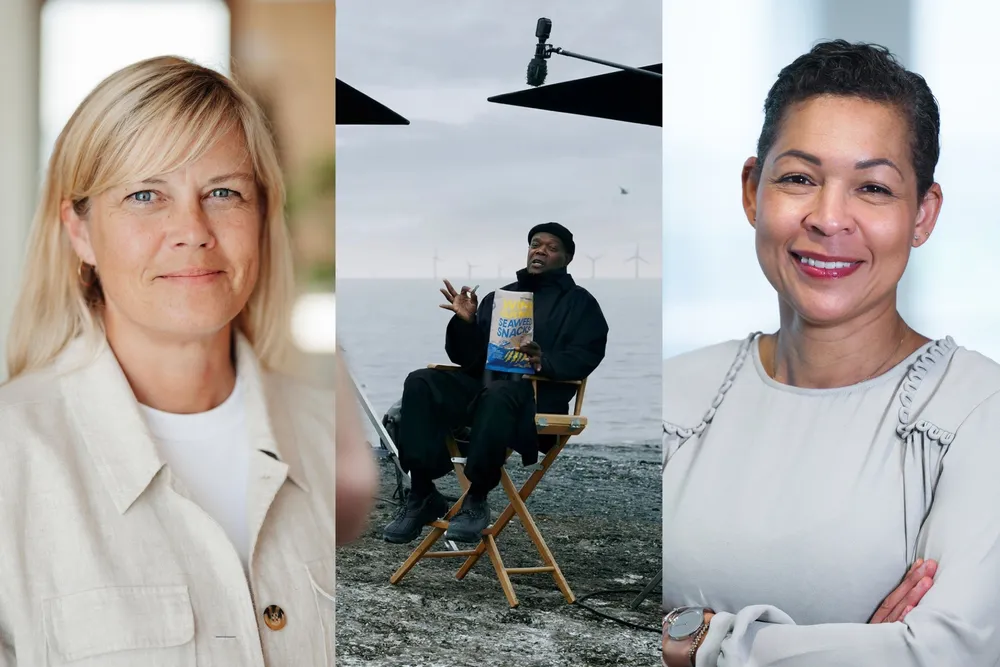Does wind have an image problem? Vattenfall execs on their ad campaign and energy 'polarisation'
Vattenfall execs stress importance of being open about 'pros and cons' of wind farms and communicating in a way that makes people 'stop and look twice'

In that context, a big, bold and brash ad campaign featuring Hollywood legend Jackson promoting, in his signature style, “motherfucking wind farms,” was a welcome tonic likely to put a smile back on the face of even the most beleaguered industry executive.
Swedish power giant Vattenfall made Jackson the star of their campaign to promote “wind farmed” seaweed snacks to raise awareness of how wind farms can become more environmentally friendly even in their immediate neighbourhood.
Jackson fits those criteria, she said, noting his background having studied marine biology before switching to acting.
Was it difficult attracting a Hollywood A-lister to promote wind farms and seaweed snacks? “He was very interested in collaborating with us because of our profile of working with fossil free energy, so it wasn't a big step for him,” said Persdotter.
The shoot with Jackson for the campaign took place in September last year. Due to his busy schedule, this took place in the US rather than Europe and, with a dash of movie magic, the turbines in the background were added afterwards.
Vattenfall did have to take care to keep a veil of secrecy around the superstar actor that would be leading the campaign, said Persdotter, but she added that this was not too difficult as it was in everyone’s interest to “keep the lid on” this.
This is not the first time Vattenfall has enlisted A-list help for an advertising campaign. In 2023, model and actor Cara Delevingne featured in an advert showing how clean Vattenfall fossil free hydrogen emissions were by using a face mist made with industrial wastewater.
Despite this, Persdotter said it’s “not like we scout Hollywood actors for our campaigns in general.” Another eye-catching campaign earlier this year without such high-powered backing saw Vattenfall showcase skis made out of recycled turbine blades.
Does wind have an image problem?
Right-wing populist politicians around the world – led by and often emulating US President Donald Trump – have stepped up attacks against the wind industry in recent years.
Have these attacks stuck? Does wind have an image problem?
Vattenfall has done a lot of research on what people think about different energy sources, said Persdotter. There are “a lot of opinions about wind," and "very diverse opinions".
When it comes to communication about “pros and cons” of wind farms, she emphasised the importance of “not shying away from the cons, but talking about those and straightening out misconceptions about wind in general.”
Persdotter said there’s nothing to say that the wind industry shouldn’t employ “a bit of humour” when addressing these issues.
“I think it's valid for all communication, in general, to have a tone of voice that engages people and makes them stop in their footsteps and look twice to see, 'What is this?'”
“And sometimes when it comes to energy, it's complex. So what we need to do is we need to break it down so people understand it easily. And that's often better done with a touch of humour, if you can make people smile and remember what you wanted to say.”
Helle Herk-Hansen, head of environment at Vattenfall, said that perceptions around wind farms are “very different in different geographies… and for different reasons. It depends on the energy system in the different markets and what you're used to.”
“But I think we in general see an increased polarisation when it comes to energy sources.”
Herk-Hansen does however believe the wind industry has done a “remarkable job” in being innovative and showing how it can reduce negative impacts.
The WIN@SEA project
Showing how wind farms can better blend with nature is at the heart of the WIN@SEA project, in which Vattenfall and partners are investigating how offshore wind farms can also be used for food production and environmental monitoring.
The project partners have grown seaweed on lines stretching between turbines at Vattenfall’s Vesterhav Syd wind farm in the Danish North Sea and used this to produce a limited run of seaweed snacks.
But Herk-Hansen highlights that, with offshore wind in particular going through a “challenging” moment in a tough economic landscape, the project opens up other opportunities as well as an extra source of revenue.
The wind industry often finds itself competing for space with other industries, whether on land or at sea, noted Herk-Hansen. “We want to showcase that it's actually an opportunity to join different sectors in the same geographical area, and get more output out of that area than if you were going to have aquaculture in an adjacent area.”
There is a lot of research that needs to be done to “actually combine two different industries,” she said. “Those learnings are a very big part of the project.”
Wind farms are, despite their inherent green credentials, often criticised for their impacts on their immediate environment. In this sense, Herk-Hansen said that a “big reason why we do our biodiversity research programmes” is to better understand the behaviour of birds and sea life and “reduce significantly” the impact that wind farms have.
Better understanding of the marine environment and how to ameliorate impacts could also help developers have an easier ride getting permits for projects, she said.
On the twin concerns of boosting wind power to support decarbonisation and avert the climate crisis and protecting local ecosystems and wildlife, Herk-Hansen insisted that “for me, they're not conflicting.”
“We have to tackle both climate change and biodiversity challenges. And we have to find ways of doing it,” she said.
“It's not either or, it's both.”
(Copyright)